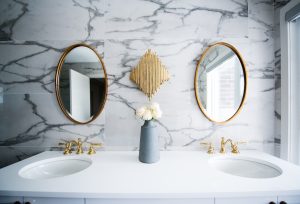
Creating the Perfect Ambiance: How Room Lighting and Temperature Can Transform Your Space
The importance of room lighting and temperature on mood and productivity cannot be overstated. The right lighting and temperature can have a significant impact on our overall well-being and performance. Whether it’s in our homes or workplaces, creating the perfect ambiance is crucial for our comfort, focus, and overall satisfaction. In this article, we will explore the science behind how lighting and temperature affect our mood and productivity, as well as provide comprehensive guides and tips for choosing the right lighting fixtures, layering your lighting, maximizing natural light, creating a cozy atmosphere, boosting concentration and alertness, setting different moods, using smart lighting and temperature control technologies, tailoring ambiance to different rooms, and adopting eco-friendly solutions.
Understanding the Impact of Room Lighting and Temperature on Mood and Productivity
The science behind how lighting and temperature affect our mood and productivity is rooted in our biological responses to light and temperature cues. Lighting has a direct impact on our circadian rhythm, which regulates our sleep-wake cycle. Exposure to bright light during the day helps us stay alert and focused, while dimmer lighting in the evening signals our bodies to wind down for sleep. Poor lighting can disrupt this natural rhythm, leading to fatigue, decreased productivity, and even mood disorders such as depression.
Similarly, temperature plays a crucial role in our comfort and performance. Extreme temperatures can be distracting and uncomfortable, making it difficult to concentrate or relax. Research has shown that optimal room temperatures range between 68-72 degrees Fahrenheit (20-22 degrees Celsius) for most individuals. Maintaining a comfortable temperature can improve cognitive function, increase productivity, and enhance overall well-being.
Choosing the Right Lighting Fixtures for Your Space: A Comprehensive Guide
When choosing lighting fixtures for your space, there are several factors to consider. First, think about the purpose of the room. Different rooms require different types of lighting. For example, task lighting is essential in areas where you need to focus and perform specific tasks, such as a home office or kitchen. Ambient lighting provides overall illumination and sets the mood for a room, while accent lighting highlights specific features or objects.
There are various types of lighting fixtures to choose from, each with its own benefits. Ceiling-mounted fixtures, such as chandeliers or flush mounts, provide general illumination and can be a focal point in a room. Wall sconces are great for adding ambient or accent lighting, while table lamps and floor lamps offer flexibility and can be easily moved around. Pendant lights are popular choices for kitchen islands or dining areas, as they provide focused task lighting.
When selecting lighting fixtures, consider the style and aesthetics of your space. Choose fixtures that complement the overall design and theme of the room. Additionally, pay attention to the color temperature of the bulbs. Warm white (2700-3000K) creates a cozy and inviting atmosphere, while cool white (3500-4100K) is more energizing and suitable for task-oriented areas.
Layering Your Lighting: Tips for Creating Depth and Dimension in Your Room
Layering your lighting is an effective way to create depth and dimension in your room. By combining different types of lighting fixtures and sources, you can achieve a well-balanced and visually appealing ambiance. The key is to have a combination of ambient, task, and accent lighting.
Start by installing ambient lighting fixtures, such as ceiling-mounted fixtures or recessed lights, to provide overall illumination. This will serve as the foundation for your lighting design. Next, add task lighting in areas where you need focused illumination, such as above a desk or kitchen counter. This can be achieved through the use of table lamps, floor lamps, or pendant lights.
To create depth and visual interest, incorporate accent lighting. This can be achieved through the use of wall sconces, track lighting, or even LED strip lights. Accent lighting can highlight architectural features, artwork, or decorative objects in your room. By layering your lighting, you can easily adjust the intensity and mood of your space to suit different activities or occasions.
The Importance of Natural Light: Maximizing Sunlight and Views in Your Home
Natural light sevildesigns has numerous benefits for our well-being and productivity. Exposure to natural light has been linked to improved mood, increased energy levels, and better sleep quality. It also provides a connection to the outside world, offering views of nature and creating a sense of openness and spaciousness in our homes.
To maximize natural light in your home, start by ensuring that windows are clean and unobstructed. Remove heavy curtains or blinds that block sunlight and replace them with sheer or light-filtering window treatments. Consider using reflective surfaces, such as mirrors or glass furniture, to bounce natural light around the room.
If privacy is a concern, consider using frosted or textured glass for windows or installing skylights to bring in additional natural light. Additionally, strategically placing mirrors opposite windows can help reflect and amplify natural light throughout the space.
Creating a Cozy Atmosphere: How Warm Lighting and Temperature Can Enhance Comfort

Creating a cozy atmosphere in your home is all about using warm lighting and temperature to enhance comfort. Warm lighting with a color temperature of around 2700-3000K creates a soft and inviting glow that mimics the warmth of candlelight. This type of lighting is perfect for living rooms, bedrooms, or any space where you want to create a relaxed and cozy ambiance.
In addition to warm lighting, maintaining a comfortable temperature is essential for creating a cozy atmosphere. Optimal room temperatures for comfort range between 68-72 degrees Fahrenheit (20-22 degrees Celsius). Consider using programmable thermostats or smart temperature control systems to ensure that your space is always at the perfect temperature.
To further enhance comfort, incorporate soft and plush textures in your decor. Use cozy blankets, throw pillows, and rugs to create a warm and inviting atmosphere. Consider using warm color palettes, such as earth tones or shades of red and orange, to create a visually warm and comforting space.
The Role of Cool Lighting and Temperature in Boosting Concentration and Alertness
While warm lighting and temperature are great for creating a cozy atmosphere, cool lighting and temperature can be beneficial for boosting concentration and alertness. Cool lighting with a color temperature of around 3500-4100K emits a bright and energizing light that mimics daylight. This type of lighting is ideal for task-oriented areas such as home offices, study rooms, or kitchens.
In addition to cool lighting, maintaining a slightly cooler room temperature can also help improve concentration and alertness. Research has shown that temperatures between 68-72 degrees Fahrenheit (20-22 degrees Celsius) are optimal for cognitive function. Cooler temperatures can help keep you awake and focused, especially during long work or study sessions.
To incorporate cool lighting in your space, consider using LED bulbs with a higher color temperature or daylight bulbs. These bulbs emit a bright white light that can help increase productivity and reduce eye strain. Additionally, ensure that your workspace is well-ventilated and properly air-conditioned to maintain a comfortable and cool temperature.
Using Lighting and Temperature to Create Different Moods: From Relaxation to Romance
Lighting and temperature can be used to create different moods in your home, from relaxation to romance. By adjusting the lighting fixtures and temperature settings, you can easily transform the ambiance of a room to suit your desired mood or occasion.
For relaxation, dimmed warm lighting combined with a slightly cooler room temperature can create a calming and soothing atmosphere. Use table lamps or wall sconces with dimmer switches to control the intensity of the light. Consider using scented candles or essential oil diffusers to further enhance relaxation.
For romance, use soft and warm lighting combined with a cozy temperature to create an intimate and romantic atmosphere. Dimmed warm lighting with a color temperature of around 2700-3000K can create a soft and flattering glow. Use candles or decorative string lights to add a touch of romance. Additionally, maintaining a comfortable room temperature can help create a cozy and intimate setting.
Smart Lighting and Temperature Control: The Latest Innovations for Your Home
The latest innovations in smart lighting and temperature control technologies offer numerous benefits for your home. Smart lighting systems allow you to control your lights remotely through smartphone apps or voice commands. You can easily adjust the brightness, color temperature, and even create customized lighting scenes for different activities or moods.
Smart temperature control systems, such as programmable thermostats or smart HVAC systems, allow you to set schedules and control the temperature of your home from anywhere. These systems can learn your preferences and adjust the temperature accordingly, helping you save energy and maintain optimal comfort.
Additionally, some smart lighting and temperature control systems integrate with other smart home devices, such as motion sensors or voice assistants. This allows for seamless automation and integration of your lighting and temperature settings with other aspects of your home, such as security systems or entertainment systems.
Lighting and Temperature for Different Rooms: Tailoring Your Ambiance to Your Needs
Different rooms in your home require different lighting and temperature settings to suit their specific purposes. Tailoring the ambiance to each room can enhance functionality, comfort, and overall satisfaction.
In the kitchen, bright task lighting is essential for food preparation and cooking. Consider using under-cabinet lighting or pendant lights above the kitchen island to provide focused illumination. Additionally, maintaining a slightly cooler room temperature can help prevent overheating while cooking.
In the living room or family room, a combination of ambient and accent lighting is ideal. Use ceiling-mounted fixtures or recessed lights for overall illumination, and incorporate table lamps or floor lamps for additional ambient or task lighting. Maintain a comfortable room temperature to create a cozy and inviting atmosphere.
In the bedroom, warm and dimmed lighting is essential for creating a relaxing and sleep-friendly environment. Use bedside table lamps or wall sconces with dimmer switches to control the intensity of the light. Maintain a slightly cooler room temperature to promote better sleep.
Eco-Friendly Lighting and Temperature Solutions: How to Save Energy and Reduce Your Carbon Footprint
Adopting eco-friendly lighting and temperature solutions not only helps save energy but also reduces your carbon footprint. There are several ways to make your lighting and temperature control more sustainable.
First, consider using energy-efficient LED bulbs instead of traditional incandescent or fluorescent bulbs. LED bulbs consume less energy, last longer, and emit less heat. Additionally, LED bulbs are available in various color temperatures, allowing you to create the desired ambiance while saving energy.
To further reduce energy consumption, use motion sensors or timers to automatically turn off lights when they are not in use. This ensures that lights are not left on unnecessarily, saving both energy and money.
For temperature control, consider using programmable thermostats or smart HVAC systems that allow you to set schedules and adjust the temperature based on occupancy or time of day. This helps optimize energy usage by reducing heating or cooling when it is not needed.
Additionally, ensure that your home is properly insulated to prevent heat loss or gain. Proper insulation can help maintain a consistent temperature and reduce the need for excessive heating or cooling.
In conclusion, room lighting and temperature have a significant impact on our mood and productivity. By understanding the science behind how lighting and temperature affect us, we can make informed decisions when it comes to creating the perfect ambiance in our homes or workplaces. Whether it’s choosing the right lighting fixtures, layering your lighting, maximizing natural light, creating a cozy atmosphere, boosting concentration and alertness, setting different moods, using smart technologies, tailoring ambiance to different rooms, or adopting eco-friendly solutions, there are numerous ways to enhance our well-being and performance through lighting and temperature control. By paying attention to these factors and making intentional choices, we can create spaces that promote comfort, focus, and overall satisfaction.


